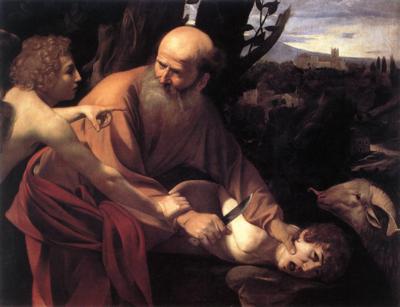Michelangelo Merisi da Caravaggio was an Italian painter who skilfully broadened his influence in Italy and around the globe. Caravaggio is known for his painting technique called chiaroscuro in which it manipulates light and dark color to display a 3-D effect. Caravaggio doesn’t take stereotyping when working for his paintings but he goes beyond the ordinary, emphasizing the momentum of his theme.
Caravaggio earned his initial trainings in Milan where he focused in still-lives and later at 1952 he went to Rome and switched his painting subject to young boys and the street life. In 1595, Caravaggio’s painting persona caught the attention of Cardinal Francesco Del Monte who in the long run became his first patron. Since then Caravaggio’s portrait paintings involved subjects from the New Testament after his success of three paintings manifesting the life of St. Matthew that somehow emphasized calling, inspiration, and martyrdom.
Caravaggio was an Italian master who made the classical masterpiece Sacrifice of Isaac, which had two versions kept in Princeton, New Jersey and Uffizi, Florence. The Sacrifice of Isaac Painting may have two versions but the two still conveys one common message, Abraham sacrificing his son Isaac as his way of showing obedience to God’s command. The painting version in Princeton exhibits the use of chiaroscuro or tenebrism in which Caravaggio transformed Western art touching the intricacies of emotions. In the Princeton version, Abraham and Isaac’s faces were partly covered in silhouettes but their emotions are visible, the display of the hands are strongly fluent, the angel displays his hand the way Abraham’s hand is placed on Isaac’s head, and the other hand of the Angel holding the knife preventing Abraham but it also shows Abraham’s willingness to listen to the Angel. The three subjects and the ram are very well emphasized without being overshadowed with the objects in the background which is perfectly free from any element that may distort the entire message of the painting.
The Uffizi version dwells in the Uffizi Gallery in Florence and is believed to have been made in honor of Cardinal Maffeo Barberini whom Caravaggio painted a portrait named Portrait of Maffeo Barberini. The cardinal was already a fan of Caravaggio beforehand, thus, the making of this second portrait painting. Isaac in this painting was identified as Cecco Boneri who portrayed as the model and at the same time acted as the angel. In this painting, Isaac shows fear of death as his father Abraham was about to slit his throat and an angel appeared trying to stop Abraham from sacrificing Isaac and suggesting to sacrifice the sheep instead. The viewers of this version would describe it as emotionally strong as it stirs their apathetic state; the gestures of the painting give psychological effect as it displays an intense dramatic visual theme. The whole picture itself is serious and demanding in a way that is controversial as this depicts a story in the Old Testament. This portrait painting of Caravaggio manifests emotional strength that has drawn much attention from the viewers.
The Uffizi version of the portrait Sacrifice of Isaac greatly conveyed a biblical message from the Old Testament, the technique formula of Caravaggio was brilliant in a way that he did not cover his main object with the unnecessary, the great portraitist did not overshadow the entire composition with outcome but instead he dwelled on the intent and action of what the picture is trying to deliver.
Author: Shyxter
